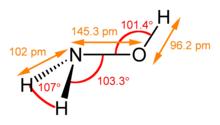Swinging the dizzy...
Murlin,
Note that when you apply plasma and/or HHO, you will get a vacuum increase right across the range of your engine, thus the vacuum advance module on the dizzy will get swung at the wrong moment(early). This mismatch will be apparent right across the range and can/will be a distraction/restriction in itself.
Don't send the dizzy off for a stab in the dark regraph, which aside from being costly, also has the risk of still not delivering exactly what you're looking for. The dizzy regraphing shops can really only hazard an educated guess at the right settings without their having actual access to the true figures relative to that particular engine, including the modifications you've done. Going to all the trouble of having it dyno tested is really just another costly and annoying distraction.
A cheap and effective alternative is to place a small plastic fish tank air bleed valve into the vacuum advance line, down near the module, thus allowing you to restrict the excess vacuum to the module by whatever the difference may be.
Doing it this way will get you back into the vacuum range which the standard dizzy vacuum advance module is already pre-set to.
It's certainly not the be all to end all, but it does deliver a very low cost solution, at least until you get the whole caper sorted out and you're happy with it, at which time you may then choose to go through the motions of regraphing the dizzy.
Personally, I think I'll just be leaving my small plastic fish tank valve right where it is, it seems to be doing a good enough job for me.
I can take a picture of how I did mine and post it up for you if you like.
Originally posted by Murlin
View Post
Note that when you apply plasma and/or HHO, you will get a vacuum increase right across the range of your engine, thus the vacuum advance module on the dizzy will get swung at the wrong moment(early). This mismatch will be apparent right across the range and can/will be a distraction/restriction in itself.
Don't send the dizzy off for a stab in the dark regraph, which aside from being costly, also has the risk of still not delivering exactly what you're looking for. The dizzy regraphing shops can really only hazard an educated guess at the right settings without their having actual access to the true figures relative to that particular engine, including the modifications you've done. Going to all the trouble of having it dyno tested is really just another costly and annoying distraction.
A cheap and effective alternative is to place a small plastic fish tank air bleed valve into the vacuum advance line, down near the module, thus allowing you to restrict the excess vacuum to the module by whatever the difference may be.
Doing it this way will get you back into the vacuum range which the standard dizzy vacuum advance module is already pre-set to.
It's certainly not the be all to end all, but it does deliver a very low cost solution, at least until you get the whole caper sorted out and you're happy with it, at which time you may then choose to go through the motions of regraphing the dizzy.
Personally, I think I'll just be leaving my small plastic fish tank valve right where it is, it seems to be doing a good enough job for me.
I can take a picture of how I did mine and post it up for you if you like.







Comment